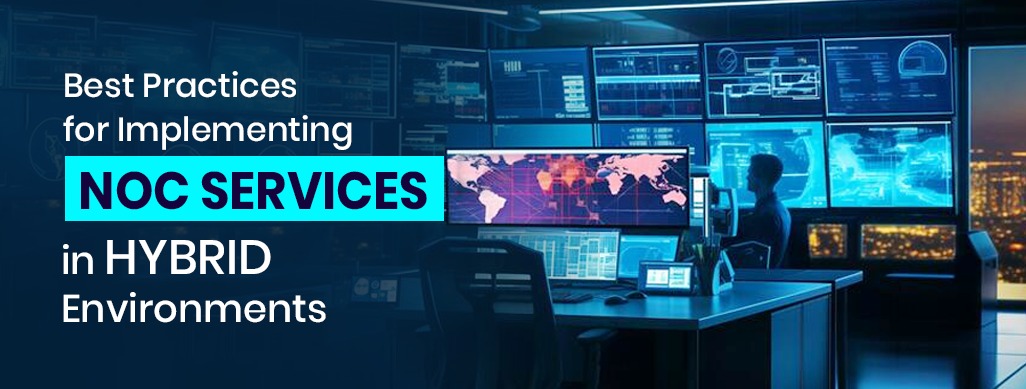
We use cookies to ensure that we give you the best experience on our website.
By using this site, you agree to our use of cookies. Find out more.

Is this hybrid IT setup a bit harder to manage than was expected?
Between on-premise servers and cloud platforms to maintain network performance and uptime, it feels like walking a tightrope. That, in turn, is where NOC monitoring services come in. Read further to learn about the details when setting up an NOC.
Thinking of hybrid setups, it is considered the modern IT infrastructure backbone in general. It straddles the on-premise data center with the cloud platform for the business of flexibility, scaling, and cost-efficiency.
Yet another roadblock occurs when managing the mixed environments, including:
These problems show that a centralized solution is not just useful but necessary. The NOC service does this.
The monitoring services act as the eyes and ears of your network. They track in real time all diagnostic activities and solve all arising issues related to your IT infrastructure regardless of server location.
Core functions can include, but aren't limited to:
In hybrid settings where blind spots abound, centralized visibility can elevate your stance on the monitoring process.
When implementing NOC monitoring services in a hybrid setup, it is critical to have a structured and deliberate approach. Below are the best practices to implement for an effective roll-out:
These things will create a solid baseline for long-term efficiency and productivity so your IT solutions company can innovate instead of always putting out fires.
If you are to implement NOC monitoring services in a hybrid model, having the right tools is necessary. Some of the main technologies include:
Integration between all of the platforms ensures data can flow efficiently and incident response is streamlined.
Even if you selected the right tools and have the best of intentions, it is easy to make mistakes when implementing NOC services. Here are some of the most common mistakes to watch out for:
Avoiding mistakes like these may save your business from unplanned outages and loss of performance.
When measuring the success of your NOC monitoring services, consider evaluating:
Choosing the right IT solutions company means that in addition to the implementation of NOC services, you'll have an experienced partner to help you continue to optimize your systems to get the most out of your ROI.
Implementing NOC monitoring services in a hybrid environment is not just a technical decision but a strategic decision as it relates to IT systems and infrastructures. As environments become more complex, the demand for 24 hour oversight, rapid incident resolution, and security assessment has never been more vital.
When implementing best practices such as clear goals, aligned tools and processes, scalable systems that will evolve, and being open to continuous optimization of systems, you'll help install a robust IT ecosystem that supports your business without interruption. A reliable IT solutions company can help you navigate this transition smoothly and ensure it is sustainable.
A hybrid IT environment is when a business utilizes both cloud and on-premise infrastructure, allowing for efficiency based on an organization's needs.
NOC services provide centralized monitoring support to your hybrid cloud and on-premise systems and, at the same time, more desirable problem resolution across operations, while making sure that downtime is minimized.
NOC monitoring services promote the ability to manage security by setting real-time alerts, managing vulnerabilities, and monitoring compliance so that threats can be found before they negatively influence your systems.
Yes. NOC platforms are designed to work with common monitoring, logging, and incident management tools.
Look for experience in hybrid environments, the availability of support, and a record of previously deployed NOC services.
Leave a Comment
Your email address will not be published.